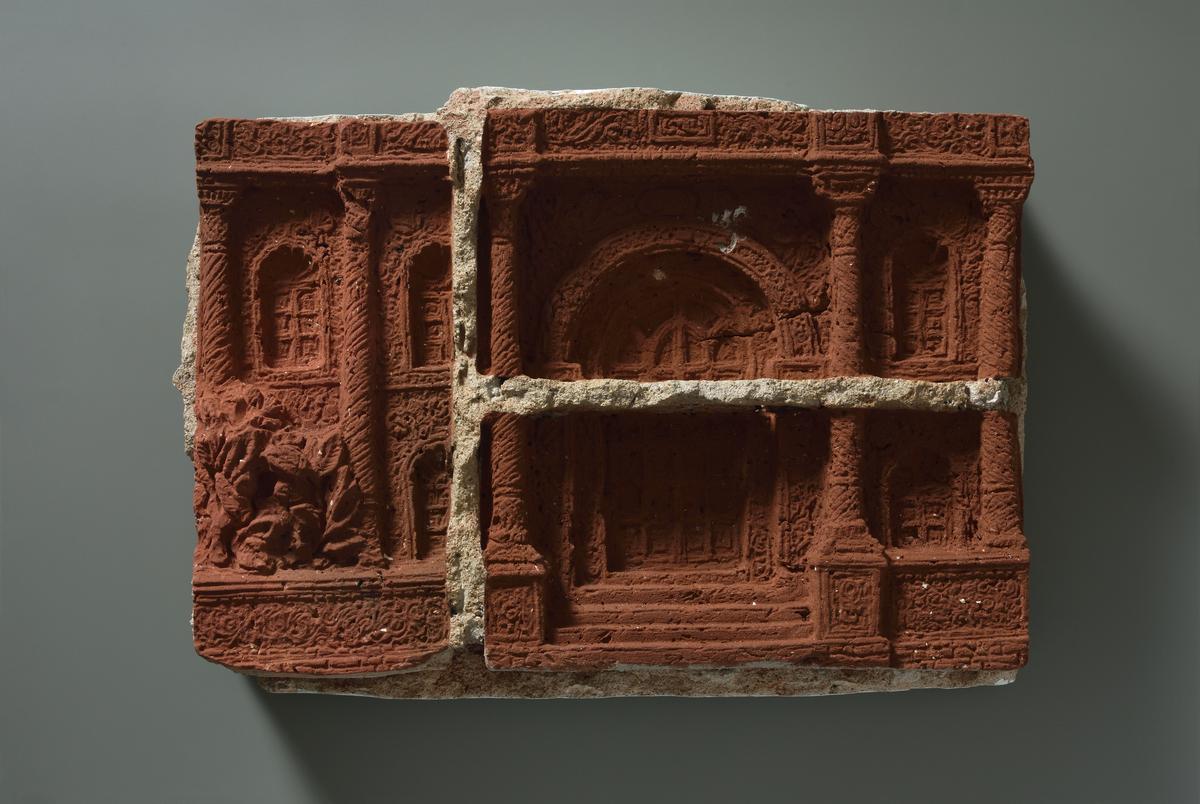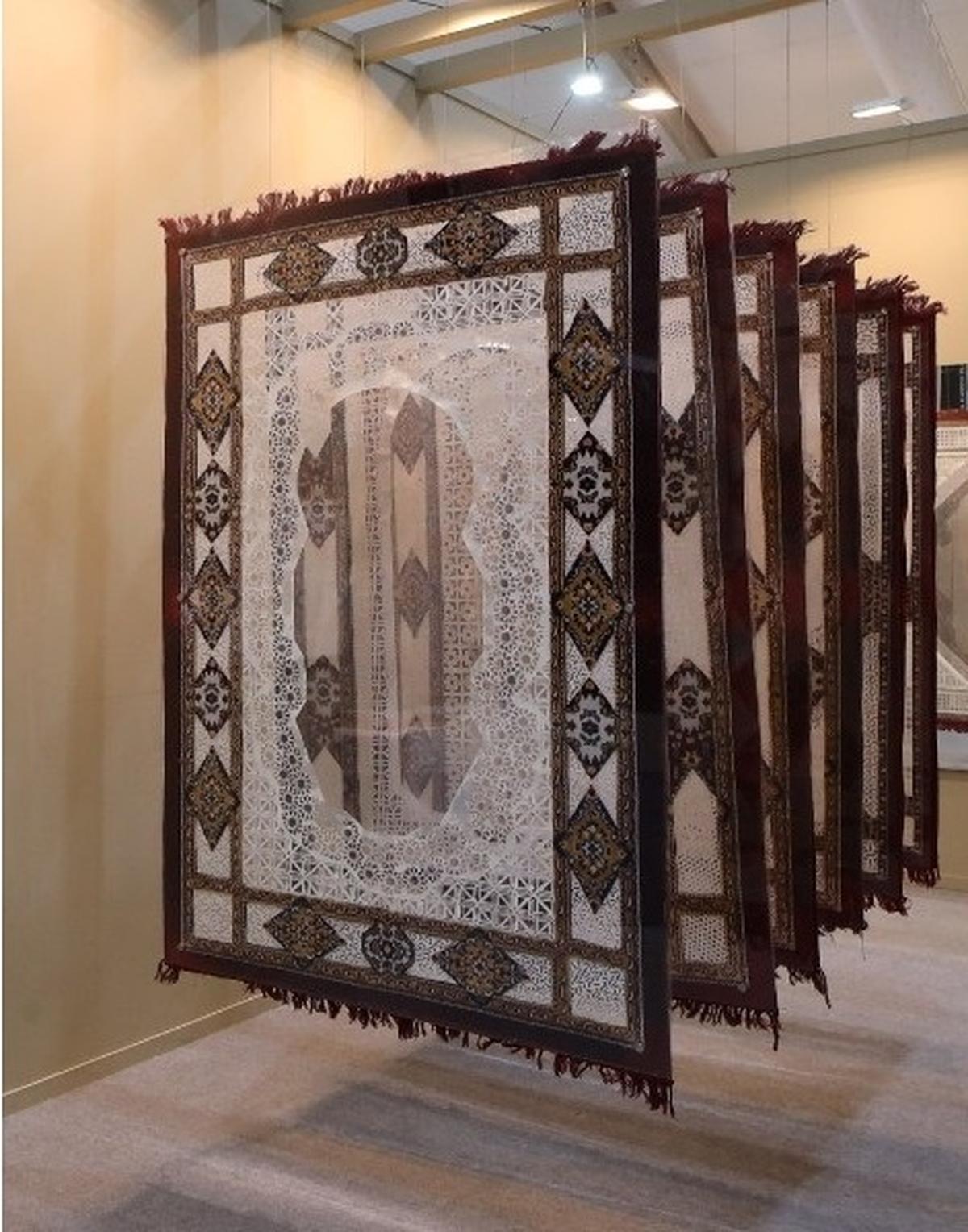An installation by Ajay Lakhera
| Photo Credit: Special Arrangement
Can You See What I See? The question doubles up as the title of an exhibition at Hyderabad’s Kalakriti Art Gallery. Paintings, sculptures and installations by 12 artists, curated by Supriya Lahoti Gandhi and Ruchi Sharma, nudge viewers to get proactive and interpret an artwork rather than be passive viewers.
A few artworks reflect the artists’ observations from their daily lives. While the artists depict slice-of-life happenings, the works also provide cues to look beyond the obvious and search for intangible stories.
For instance, one of Ajay Dhapa’s artworks, Navivasi (new fragrance), reflects multicultural co-existence. He uses a floral carpet as his canvas to portray childhood memories of his hometown, Jamnagar. The Vadodara-based artist uses techniques from Mughal and Pahadi miniature paintings for his imagery of a marketplace, old architecture and vendors selling their wares by the streetside. Beneath these vignettes is a picture of communal harmony.

From a distance, one of Ajay Lakhera’s artworks looks like pieces of a jigsaw puzzle that need to be rearranged. Fragmented images, a few hundred of them, are a reference to unstoppable memories. It is the artist’s way of telling viewers that even small, insignificant events have a way of shaping who we are. A collection of memories is woven together to describe life as it unfolds.

Doors by Girjesh Kumar Singh
In the larger context, Can You See What I See? is a collection of artworks that have diverse narrative structures. Artists use forms, figures and patterns drawn from their observations of Nature, architecture and people to discuss history and social interactions.
A series of paintings by Ganesh Das highlights environmental concerns. He draws attention to the need for earth-friendly practices and reducing the exploitation of natural resources. The imagery of birds, animals and flora is a throwback to a time when people co-existed with Nature rather than trying to dominate it.
Girjesh Kumar Singh’s installations are designed using pieces from demolished constructions. He presents a series of doorways as a marker of the history of a place. The brick red of the old walls narrates a story of migration and displacement.
Small businesses and vendors take centre stage in Gulab Kapadiya’s circular artworks in which vendors sell bamboo baskets, jute bags, bangles, flowers and more. The repetitive motifs of lotus buds and the watercolour washes render a vintage effect to the paintings.
Kamal Pandya’s sculpture, which resembles a large stainless glass, when viewed up close, has several modern architectural designs — a collection of houses in a neighbourhood, streets and marketplaces.

The Layers by Neha Verma
| Photo Credit:
Special Arrangement
Neha Verma’s multi-layered installation The Layers encourages viewers to observe the subjects from different angles. Layers of fabric and paper carvings that resemble a carpet, hung from the ceiling, act as windows to the portraiture on the wall. Peer into the architectural patterns on the fabric inspired by Hyderabad and Lucknow to decipher the larger image. In Shatranj ke do Khiladi, the artist creates an image that resembles a chessboard, with its squares celebrating indigenous crafts such as chikankari embroidery and paper carvings; the chessboard-like imagery is flanked by patterns that resemble jaalis, significant in the architecture of these cities.

The other artworks include Kapil Anant’s portraiture of a street food vendor, an elephant and a mahout as part of his Incredible India series and Nitasha Jaini’s series that comment on corporate work culture featuring men and women carrying laptops and navigating cities that are a mix of old and new. Also showcased are select artworks by Raka Panda, Sanjoy Patra and Srinivas Pulagam.
(Can You See What I See? is on view at Kalakriti art gallery, Banjara Hills, Hyderabad, till July 2)